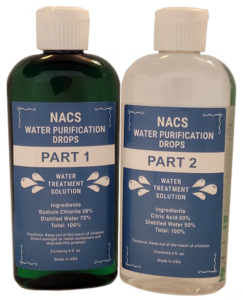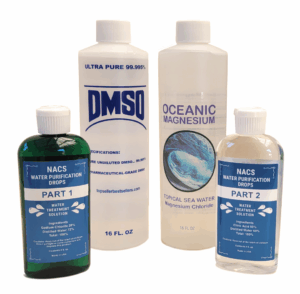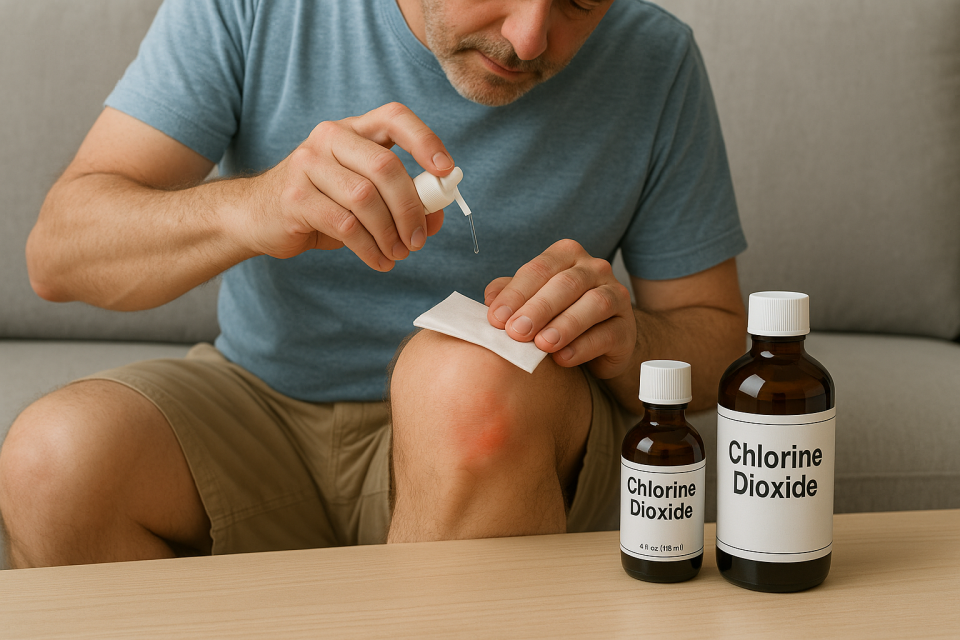Exploring chlorine dioxide’s potential for joint, bone, and muscle restoration. Musculoskeletal disorders affect millions of people worldwide, leading to chronic pain, stiffness, reduced mobility, and loss of independence. These disorders often involve inflammation, infection, and cellular degradation of joints, bones, ligaments, or muscle tissue.
Chlorine dioxide (ClO₂), while officially recognized only as a water purification compound, has gained global attention for its reported off-label benefits among alternative health practitioners. Many users report improvements in conditions traditionally resistant to standard medical therapies.
This article explores the potential efficacy of chlorine dioxide in addressing common musculoskeletal disorders through its antimicrobial, anti-inflammatory, oxygenating, and detoxifying properties, and how individuals have applied it in non-medical contexts for relief and recovery.
- Arthritis
Description:
Arthritis refers to inflammation of the joints, often leading to pain, swelling, and stiffness. There are more than 100 types, with rheumatoid arthritis being autoimmune and osteoarthritis being degenerative.
How Chlorine Dioxide Works:
Chlorine dioxide assists by reducing microbial load, which can trigger autoimmune responses and inflammation. It increases oxygen availability in tissues and helps neutralize acidic waste products that irritate joints.
Suggested Use:
Users often apply a low-dose oral protocol (Jim Humble Protocol 1000) — 3 activated drops in 100 mL water, taken hourly for 8 hours — or topical application using diluted CD/DMSO applied via compress over affected joints. This can support the circulation and oxygenation of the joint capsule.
- Osteoarthritis
Description:
A degenerative joint disease caused by the breakdown of cartilage, resulting in pain, swelling, and stiffness, usually in older adults.
How Chlorine Dioxide Works:
Chlorine dioxide’s oxidative mechanism helps remove dead or damaged cells, supporting the body’s regeneration of healthy tissue. Its oxygen release promotes local healing by improving microcirculation and reducing inflammation-causing toxins.
Suggested Use:
Oral micro-dosing (1–3 drops/hour of activated solution) combined with warm topical compresses soaked in diluted CD/DMSO over painful joints. Many users pair this with magnesium oil for enhanced transdermal absorption and relaxation.
- Osteoporosis
Description:
A condition marked by weak and brittle bones due to calcium loss and hormonal imbalance. It’s most common among postmenopausal women and elderly individuals.
How Chlorine Dioxide Works:
Osteoporosis is aggravated by oxidative stress and metabolic acidosis. Chlorine dioxide assists the body in neutralizing acidic byproducts, potentially helping to slow demineralization. Its detoxifying properties aids in freeing up the body’s natural calcium and magnesium reserves for bone maintenance.
Suggested Use:
Internal micro-dosing for general detoxification (Protocol 1000) with CD foot baths to enhance mineral uptake and circulation. Pairing with magnesium and iodine is often reported to yield better results.
- Bursitis
Description:
Inflammation of the bursae, small fluid-filled sacs that cushion bones, tendons, and muscles, typically due to overuse or infection.
How Chlorine Dioxide Works:
Because chlorine dioxide selectively targets pathogenic microorganisms and reduces local inflammation, it relieves the swelling and discomfort of bursitis. Its action helps sanitize the bursa region from microbial irritants.
Suggested Use:
Topical application using a diluted CD/DMSO solution on the affected area with a soft compress for 15–20 minutes twice daily, combined with internal dosing to address systemic inflammation.
- Fracture
Description:
A broken bone resulting from trauma or weakening of the bone structure.
How Chlorine Dioxide Works:
Fracture healing relies heavily on the availability of oxygen and minerals. Chlorine dioxide increases oxygen supply at the cellular level, which accelerates tissue repair and reduces the risk of infection, especially after surgery or in compound fractures.
Suggested Use:
Oral micro-dosing for internal oxygenation and CD baths for overall systemic recovery. Avoid applying directly over open wounds until the skin has fully closed.
- Back Pain
Description:
A widespread condition that can result from muscular tension, disc degeneration, or nerve impingement.
How Chlorine Dioxide Works:
Back pain often involves localized inflammation, lactic acid buildup, and the presence of microbes in intervertebral tissues. Chlorine dioxide supports detoxification of the spine’s connective tissue and improves muscular oxygen uptake.
Suggested Use:
Oral intake following the Standard Maintenance Dose (Protocol 1000) and topical rub made with diluted CD mixed with magnesium oil, applied along the spine or lower back muscles twice daily.
- Gout
Description:
A type of arthritis caused by uric acid crystal buildup in joints, leading to severe pain, redness, and swelling, often in the big toe.
How Chlorine Dioxide Works:
Chlorine dioxide’s ability to release oxygen and detoxify helps oxidize uric acid and reduce systemic acidity, allowing the body to process waste better. It also acts on microbial triggers and helps the liver and kidneys function more efficiently.
Suggested Use:
Internal micro-dosing (Protocol 1000) combined with CD/DMSO foot or hand baths to relieve localized inflammation and pain.
- Sciatica
Description:
Pain radiating from the sciatic nerve is usually caused by compression of the lower spine or inflammation of the nerve root.
How Chlorine Dioxide Works:
Chlorine dioxide helps reduce inflammation and oxygen deprivation in the area surrounding the affected nerve. Its oxidation helps neutralize toxins or infectious agents that contribute to nerve irritation.
Suggested Use:
Internal micro-dosing along with transdermal application of diluted CD on the lower back, hips, or thigh region. Users report improved results when combined with DMSO for enhanced absorption.
- Joint Diseases (Generalized)
Description:
A broad category encompassing conditions that affect the synovial membranes, cartilage, or joint structure, often resulting in stiffness, pain, or deformity.
How Chlorine Dioxide Works:
Joint diseases are usually inflammatory or autoimmune in nature. Chlorine dioxide’s oxidative detox action may deactivate bacterial toxins, support immune modulation, and oxygenate synovial tissues.
Suggested Use:
Oral micro-dosing (Protocol 1000) combined with joint wraps using diluted CD/DMSO-moistened cloth. Regular CD baths or oceanic magnesium soaks can enhance relaxation and blood flow.
- Tennis Elbow (Lateral Epicondylitis)
Description:
Inflammation of the tendons that join the forearm muscles to the outer elbow, typically from repetitive motion or overuse.
How Chlorine Dioxide Works:
The oxidizing action reduces localized inflammation, clear out metabolic waste, and restores tissue oxygenation. It also acts as a mild antimicrobial, preventing infection in chronic cases.
Suggested Use:
Apply diluted CD via a cotton pad or compress for 20 minutes twice daily. Follow up with a gentle massage using oceanic magnesium or a carrier oil to promote healing.

Scientific Support and Field Observations
Though formal medical trials are limited, anecdotal and field reports from alternative practitioners, natural healers, and individual users have described reduced inflammation, faster recovery, and less pain in musculoskeletal disorders when chlorine dioxide was used as part of a wellness protocol.
Studies have shown chlorine dioxide’s ability to:
- Eliminate pathogens in biofilms (potentially reducing autoimmune triggers)
- Enhance oxygen availability in tissues
- Neutralize acidic waste
- Reduce inflammatory markers indirectly through detoxification pathways
Researchers such as Andreas Kalcker and Jim Humble have documented numerous case reports suggesting benefits for chronic inflammatory conditions, including joint and muscle pain.

Safety and Considerations
Chlorine dioxide is approved only for water purification purposes. Any other use is considered off-label and experimental. Those choosing to explore its use should:
- Use only properly diluted solutions
- Avoid concentrated ingestion or inhalation
- Follow established non-medical user protocols (e.g., Jim Humble’s MMS/CDS methods)
- Stay hydrated and support detoxification with natural minerals
Musculoskeletal disorders can significantly diminish quality of life, and while chlorine dioxide remains controversial in mainstream medicine, its users report impressive outcomes in reducing pain, inflammation, and promoting recovery in joint, bone, and muscle conditions.
By enhancing oxygenation and reducing microbial and toxic burdens, chlorine dioxide appears to help restore balance in tissues that have long been deprived of vitality.
As with all alternative approaches, users are encouraged to educate themselves fully, proceed responsibly, and document their personal results for future study.
References
- Humble, Jim. The Master Mineral Solution of the Third Millennium.
- Kalcker, Andreas. Forbidden Health: The Paradigm Shift to Cure Diseases and Save Lives.
- Chlorine Dioxide: An Oxidant for the 21st Century, Oxidative Medicine Review Journal, 2018.
- Humble, Paris. Healthy Alternative Chlorine Dioxide Uses: Non-Pharmacological Health Restoration.
- Rowland, Wayne. Silver Water and Oxidative Healing: Parallel Effects in Bio-Oxygenation.
- U.S. Environmental Protection Agency (EPA). Alternative Disinfectants and Oxidants Guidance Manual.
- Anecdotal reports compiled from CDS user communities and natural healing forums (2010–2024).

